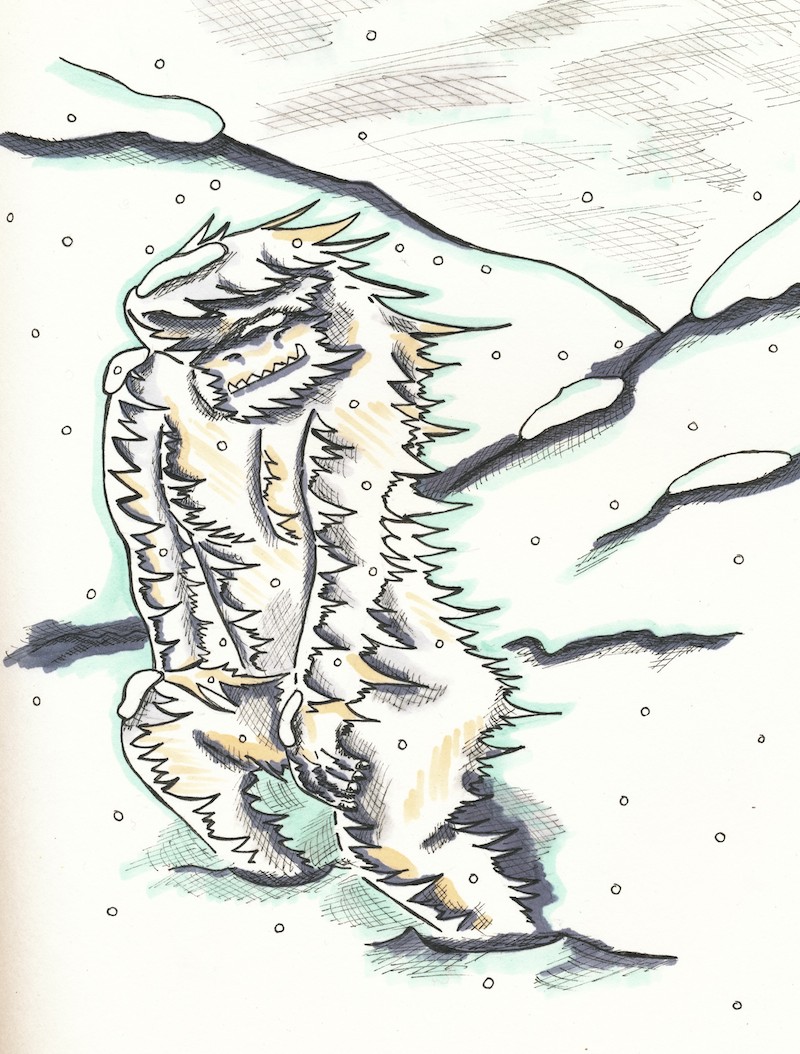The Yeti
Just as Sasquatch/Bigfoot, the Yeti is described as an ape-like species walking on two legs. He is said to be living in the Himalayan regions of Nepal and Tibet. And also, the Yeti’s roots can be traced to ancient narratives. But unlike what we understand the Yeti to be today, the natives of the Himalayas did not talk about an Abominable Snowman with white fur, but of an angry dark-haired gorilla- or bear-like creature that lived high in the mountains. (described in “Abominable Science” p.75).
A lot of movies have cemented the snowman-picture, for example the first ever Yeti movie “The Snow Creature” from 1954. The Yeti even has a guest appearance in the highly successful “Monsters, Inc (2001)” and is the namesake of the official airline of Nepal, Yeti Airlines. But when did the Yeti, this creepy creature that used to strike terror into the hearts of the Himalayan people, become cool? The story is much older than that of the Sasquatch or Nessie. According to H. Siiger the Yeti has always been a part of the region’s mythology, people have dozens of names for it. The name we use today is most likely a mispronunciation of the Sherpa name for the man from the mountains: Yeh-teh = animal of rocky places. When the first expeditions entered the rocky region, the expedition participants took the story back home.
In 1832 the first descriptions were published in travellers’ journals, talking about tall, bipedal creatures covered with long dark hair. Later footprints were reported. Similar reports have repeatedly been published until today. In 1925, N. A. Tombazi, a member of the Royal Geographical Society, reported a sighting at about 4,600 m. And during an expedition of the British Newspaper Daily Mail in 1954 mountaineering leader John Angelo Jackson (pdf) photographed footprints many of which many were unidentifiable (and therefore of Yeti origin?). The mystery of the snowman grew. And went fully ‘viral” (to use a modern term) when an expedition found what they believed to be a Yeti scalp.







